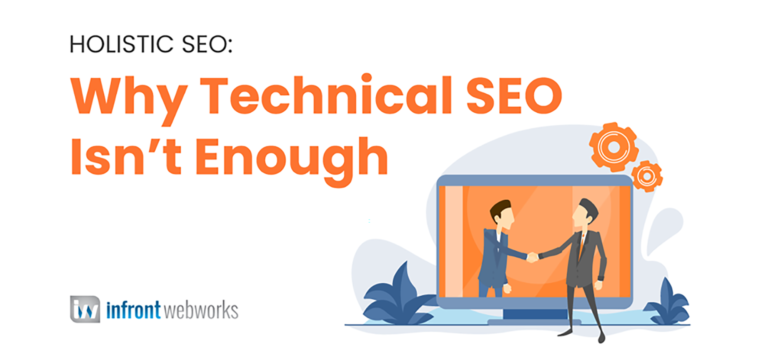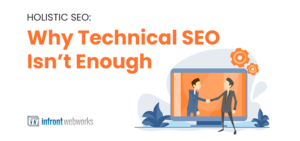Ranking on Google search requires more than technical SEO.
Although optimizing your website for search engines is advisable, focusing solely on technical SEO efforts won’t do you any favors in the long run.
Permanently ranking on Google despite its constant algorithm changes demands a comprehensive and holistic SEO strategy focused on multiple aspects of your website.
But what does that strategy entail? Let’s find out. Here’s what we’ll cover:
Table of Contents
What is Holistic SEO?
Holistic search engine optimization (SEO) is the process of improving all aspects of your website to increase its visibility in the search engine results pages (SERPs). The ultimate goal is to create a website that provides the most relevant and accurate information and is easy to use.
Holistic SEO isn’t one-dimensional like traditional SEO, wherein marketing teams focus on optimizing for keywords, headers, meta tags, and the like.
It takes the elements of traditional SEO and content marketing and mixes them with practices that aim to improve the user experience. Fox News calls it “search experience optimization.”
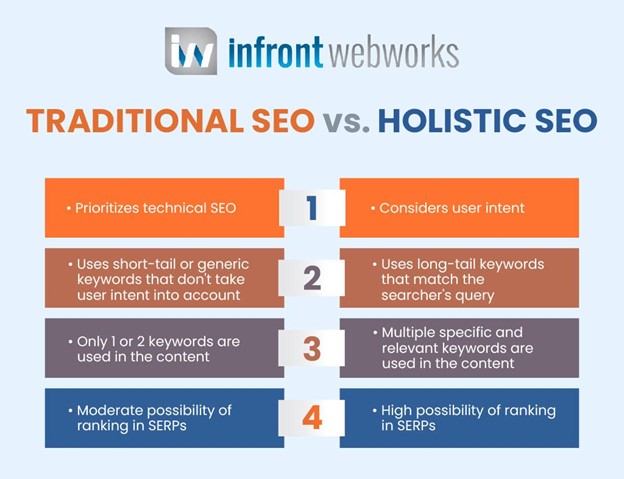
For a more in-depth view of holistic SEO, let’s break down its components (SEO and content marketing) and discuss their contributions to the holistic approach.
SEO 101
SEO refers to the techniques you implement to make your website more searchable. The different kinds of SEO — on-page SEO, off-page SEO, and technical SEO — contribute to website visibility.
The more visible your web pages are, the more likely people will visit your website, and the more likely you will get sales.
Although there are multiple benefits to SEO, 57% of businesses still don’t have an SEO strategy. One of the reasons they’re scared of SEO is they can’t guarantee a positive return on investment.
It’s a valid point: haphazard SEO strategies can get you on the front page of Google and drive a ton of traffic initially, but if visitors don’t convert, you’ll end up wasting your time and money.
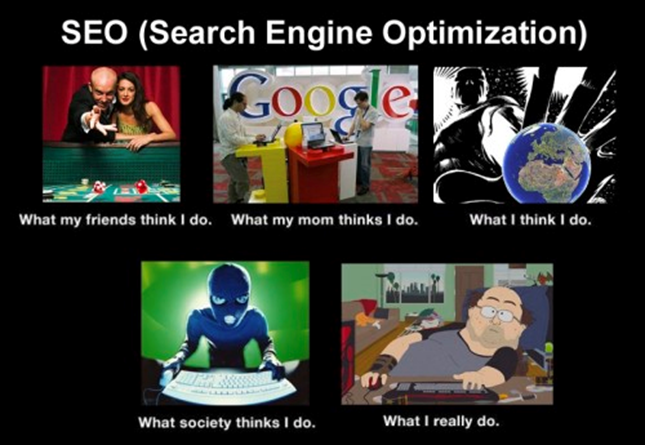
Moreover, SEO’s reputation for being too technical, complicated, and confusing to learn doesn’t help.
Google’s frequent algorithm changes and webmaster guideline updates set even the most experienced SEOs into a frenzy, so it can be overwhelming to beginners.
At the end of the day, all Google wants to accomplish with SEO is creating the best user experience for people visiting your website.
Google uses algorithm updates as experiments to see which combination of search results will be most helpful to users. Multiple ranking signals make up these algorithms, which can be divided into three major categories:
- Technical SEO, covers strategies that directly impact how search engines crawl and index your website. Technical SEO practices include site speed optimization, structured data, and canonicalization.
- Off-page SEO or SEO tactics carried away from your website. Examples include link building, content marketing, and social media.
- On-page SEO, or the practice of optimizing content for both humans and search engines. Common on-page techniques include keyword optimization and adding title tags, meta tags, and URLs.
While some technical knowledge is required for SEO, there are also SEO practices you can implement yourself. For example, creating content.
What is Content Marketing?
Content marketing is creating and distributing online material (like blogs, videos, podcasts, emails, and social media posts) that stimulates interest in a product or service.
According to HubSpot’s 2021 State of Marketing Report, 82% of marketers actively invest in content marketing as it’s a powerful customer acquisition and conversion tool. Content marketing helps marketers generate thrice as many leads as outbound marketing and costs 62% less.
Besides conversion, other benefits to content marketing include:
- Boosting brand awareness
- Building relationships with customers
- Increasing revenue
But having content alone isn't enough.
And Ahrefs backs that up, showing 91% of web content doesn’t generate organic traffic. There’s one thing these pages have in common: They aren’t properly optimized for SEO.
As you can see, SEO makes up for where content marketing fails and vice-versa. However, to achieve a successful, symbiotic relationship between SEO and content marketing, you’ll need to put strategies in place so nothing gets left behind.
But that begs the question: How do you weave content marketing into SEO for a more holistic SEO approach?
How Content Marketing Helps SEO
SEO and content marketing work hand-in-hand to help your website rank on the search engines. Without content, your website would still struggle to get on the first page of the SERPs because it won’t have anything to match users’ specific search queries. Without SEO, no one will see your content.
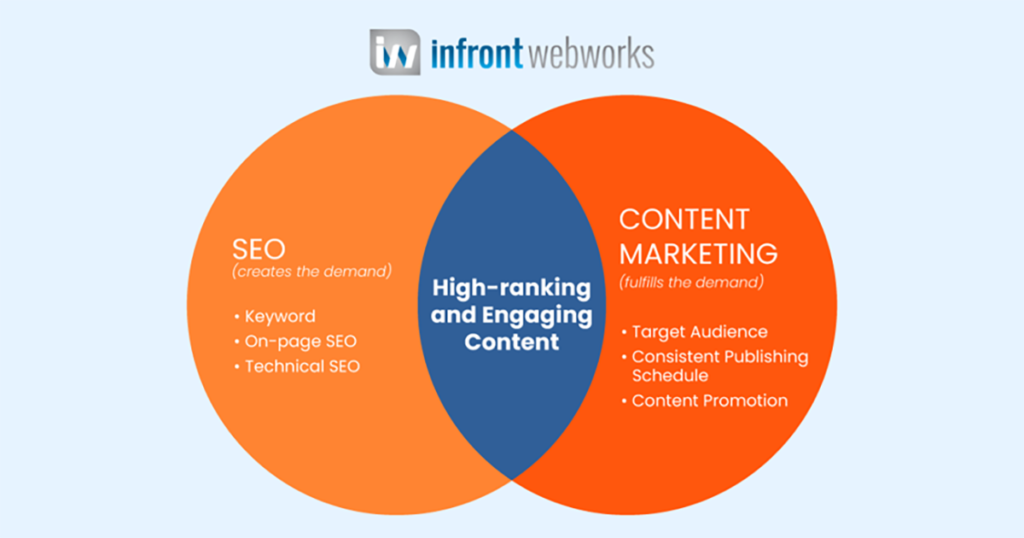
A holistic SEO strategy brings both together to create high-quality content. It improves your overall marketing efforts while helping you achieve lasting success. It’s not a case of either/or: you need SEO and content marketing to rank at the top of the SERPs.
Follow these best practices for combining SEO and content marketing:
1. Do Keyword Research.
Yes, it all starts with standard practices. Publishing well-written content isn’t enough if it isn’t discoverable or does not answer your audience’s queries.
Remember, holistic SEO is about improving the whole search experience. So, besides having a usable website, consider the following before starting the content writing process:
- What your target audience is searching for
- Why they’re searching for it
- What keywords you can rank for on search engines
- The difficulty of ranking for these keywords
You can answer these questions with keyword research.
Tools such as Ahrefs, Moz, and SEMRush help you determine a keyword’s potential, understand marketing interest and demand, and discover related keywords that you can still rank for.
2. Create Content that Keeps Search Engines in Mind.
Once you’ve determined the keywords you want to optimize for, don’t think for a second that SEO’s work is done. You still need to incorporate SEO practices while creating content — after all, it’s both humans and search engines reading the content.
Here are a couple of ways to do so:
- Get an SEO perspective. Before you start writing, an SEO consultant can help you interpret keyword research to make sure you’re covering the best topics and optimizing for the right search intent.
- Perform on-page optimization. Following the best on-page practices such as adding headings, meta descriptions, and alt tags help search engines find your content.
- Link to related blog posts. That way, search engines know you publish relevant content.
3. Frequently Publish Content.
Besides quality, search engines look at how often you publish content because it signals that your website is up-to-date.
If you publish content frequently, that’s great! But if you’ve stopped producing regularly or are just starting, know that establishing a consistent publication schedule helps tremendously.
New content also increases the number of potential keywords you can rank for — bringing in traffic and increasing your authority on various topics.
Some helpful tips:
- Perform a content audit. That’ll help determine content gaps. Find old well-performing articles and rewrite low-quality content.
- Do a content refresh. Create fresh content to fill content gaps and update old well-performing articles.
- Repurpose content. If you run out of content ideas, you can create blog posts from other mediums such as webinars, podcasts, or social media posts.
- Repromote the piece to drive traffic.

4. Optimize Your Website for Content
Give your content a fighting chance by improving website performance.
Consider things like:
- Website speed. Site speed is an important SEO consideration and one of Google’s ranking factors. According to Google, bounce rates increase by 32% when page load speed increases from one to three seconds.
- Mobile responsiveness. Google considers mobile-first indexing as a ranking factor. Not optimizing for mobile hurts your website’s SEO.
- Schema markup. Also known as structured data, schema markup is code you put on your website to help search engines give more informative results. Structured data make features like featured snippets possible.
- An XML sitemap is a list of URLs on your website. It helps search engines crawl your website more intelligently.
These are just some things you can do to help search engines find content quickly.
5. Don't Forget Content Distribution Channels.
Promoting your content on other channels helps it rank.
Digital marketing channels such as social media and email marketing are among the most popular ways to distribute content. They may not be considered ranking signals, but they indirectly impact your SEO performance.
There are over four billion email users worldwide, the majority of which check their email daily. So valuable is email that 80% of marketers would rather give up social media for email marketing.
But don’t count social media out.
People use social media to share ideas and interests. If someone shares your blog post, which eventually goes viral on a professional network like LinkedIn, it can bring more traffic and relevant backlinks.
When distributing content, here are a few things to remember:
- Use A/B testing to determine which formats and types of content perform best.
- Add a call-to-action to invite your audience to share or interact with the content.
- Add links to your social media accounts on your email signature and footer.
- Track metrics using Google Analytics.
Final Thoughts — SEO and Content Marketing: Creating a Holistic SEO Strategy
Google’s frequent algorithm changes all point to one goal: creating an excellent experience for searchers. In that sense, marketers should create a holistic SEO strategy that combines SEO and content marketing to adapt and make the best out of the current optimization experience.
If you’re ready to leverage the holistic SEO approach, Contact Infront Webworks for an SEO consultation today. We’ll help you connect your SEO and content marketing efforts to achieve the best results.

Allan Todd is CEO of Pagecafe Digital Marketing. In 2022, Allan teamed up with Infront Webworks to provide digital marketing, website design, content marketing, SEO and strategy and solutions to local businesses. Allan lives in Colorado Springs.

